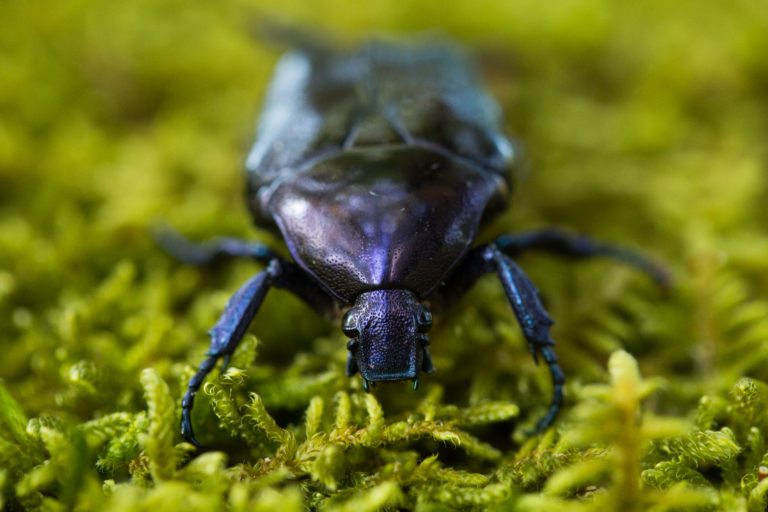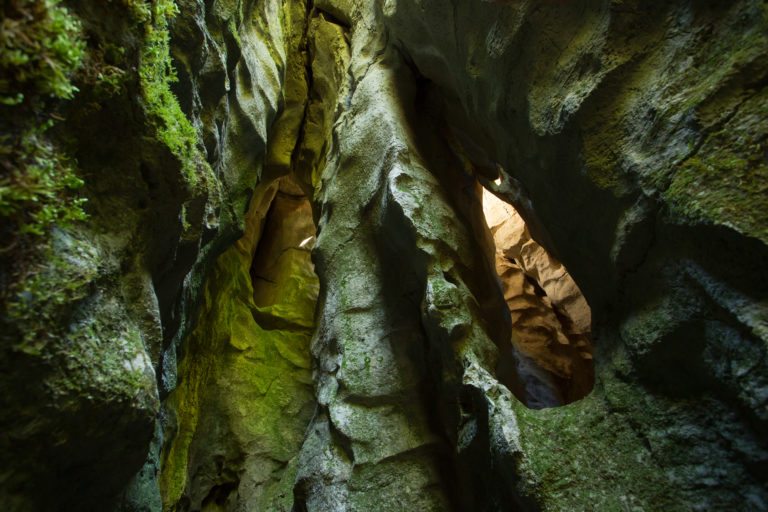Classification : Natural Sensitive Area, Natura 2000, ZNIEFF1, ZNIEFF2
Managing Organization : Community of Municipalities of Pays des Vans in Cévennes
Presentation :
Dolomitic ruin karst landscape, Berriasian stratotype, gorges and spectacular escarpments. Its wealth in species of insects makes it one of the high places of French entomology (Blue Cetonia, serrated magician, …). This dolomitic megakarren (higher Kimmeridgian) with landscapes and underground networks offers very favorable habitats for bats (22 present species). In addition, in the network, the flow and the course of the waters are of a disconcerting complexity
(resurgences, intermittent courses, diversions …). Some temporary streams have never been explored. The touristic pressure is a major issue for the site, but is fairly localized however.
On the limestone plateau and the Gras, formerly grazed, the substrate is very thin (rendzinas), even nonexistent (lithosol) due to erosion by old cattle routes. In the forest of downy oaks and the deaclases, a calcium mull is present. In sinkholes, the accumulation of decalcification clays leads to local acidity of the soil, which has allowed the historic planting of many chestnut trees. The alluvial plain, for its part, consists of quaternary alluvium for the soils of Chassezac.
Scientific or educational interests :
The first particularity of the Païolive site is its rocky chaos which forms a labyrinth of limestone geological forms. This is a very interesting site to study all the different karst forms. We will find a large number of small or medium-sized cavities as well as potholes and resurgences. Finally, always in terms of geology, we find the Berriasian stratotype which outcrops on the SNA site of Païolive: Le Berriasian.
On these rocky environments we find a great diversity of mosses and lichens and in the cavities of the bat cottages (beware the presence of people can harm the bat cottages).
The Païolive site is very interesting for everything related to beetles. There is a great variety in the old pubescent oak wood of the Païolive wood, but also all the orthoptera linked to the open Mediterranean environments.
In general, access to sites and places of study is quite easy and does not require large physical capacity.
We can note the important scientific inventory work carried out by the “Païolive association”, making it possible to mobilize a large amount of scientific data.
Thematic key words : agro – ecology, biology, botany, cartography, climatology, dendrology, ecology, entomology, study of fauna, forest, geography, sedimentary geology, geomorphology, (pre) -history, hydrogeology, hydrology, impact on tourist numbers, meteorology, ornithology, pedology,
Keywords typology of sites : natural non-instrumented cave, natural instrumented cave, gorge, karrens, quarry, panorama, reading landscapes, archaeological site, riparian forest, agricultural or pastoral area.
Access modalities :
Public car parks, hiking trails, cavities managed by the Department.
Support possible on a case-by-case basis depending on availability and scientific subject.

